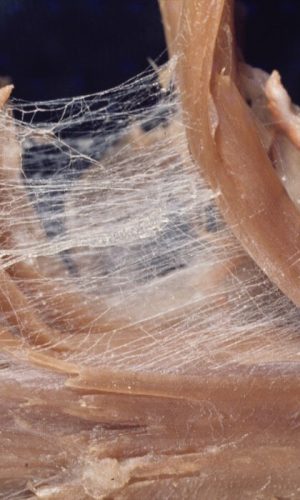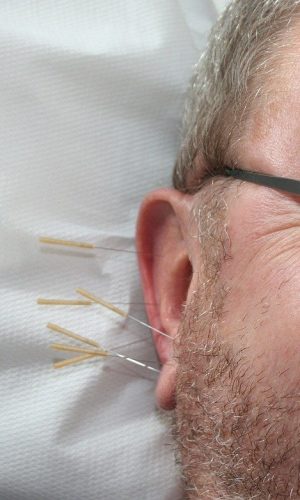Clinical Treatments


Scarwork
If you have recently underwent surgary or if you are concerned about the appearance or if an an old scar that may be causing you pain, we can help remove this pain and reduce permanent scaring to the afflicted area.
This image shows the successful before and after treatment from a breast cancer reconstruction client, Myofascial and Scarwork were applied out to avoid the rejection of the soft tissue after chemo-therepy.
In 2014, I had the privilege straight after a Facial Symposium Conference, to have been one of the first in he UK to be taught by Sharon Wheeler originally trained with Ida Rolf, the originator of Rolfing and Structural Integration. She developed her approach to working with scars and adhesions over many years, eventually starting to teach it when she realised that she had developed something ground-breaking. Since using these techniques within treatments it has provent to be very effective with scars over many years old. Even after 10, 20 years old can still respond to treatment. Manual techniques are used to improve the visual look of a scar, along with focusing on the aches and pains associated with scars. The techniques promote blood supply, release of stuck tissue, improving function and promote healing.
Post-surgery is invaluable;
- Myectomies
- Hip Replacements
- Fractures
- Sprains
- Motorbike or Road Traffic accidents
- Skin damage
- Cancer Treatments – After receiving Radiotherapy or Chemotherapy breast tissue hardens and can do so up to 15-18 months after receiving treatment. When treating such clients ScarWork along with Myofascial skills are applied to help maintain soft collagenated membrane, facilitating the healing process and prevent rejection of implants.

Myofascial Release
The Anatomy Trains lays out fascial and myofascial ‘anatomy of connection’ throughout the body, giving you the ability to map the pattern and shape the change that develop in the body. Stress, trains and repetitive load can imbalance our body.
There are 12 ‘myofascial meridians’ in the Anatomy Trains system joining individual muscles, tendons and tissue within the fascial fabric – each with a defined anatomy and ‘meaning’ in human posture and movement.
Fascia surrounds and protects every living tissue, tendon, muscle, bone, ligament and organ of the body. In healthy conditions the fascial system is relaxed and wavy in configuration. This provides a cushioning and supportive mechanism allowing us to move safely without restriction or pain.
Benefits from Myofascial Treatment:
- Improved posture
- More range of movement Movement with ease
- A greater understanding of how the body moves
- Reduce tension deep within the connective tissue’s
- Reduce pain



Dry Needling
Dry needling involves inserting a tiny monofilament needle in a muscle(s) in order to release shortened bands of muscles and decrease trigger point activity. This can help resolve pain and muscle tension, and will promote healing. This is not traditional Chinese acupuncture, but is instead a medical treatment that relies on a medical diagnosis to be effective. Dry needling is a valuable and effective treatment for musculoskeletal pain. Like any treatment, there are possible complications. While complications are rare in occurrence, they are real and must be considered prior to giving consent for treatment.
I use Dry Needling techniques to integrate with my treatment to treat pain and movement impairments. The needles are “dry” needles, ones without medication or injection, into areas of tension within the muscle or myofascial tissue. Dry needles are the same sterile needles used as acupuncturists, based on traditional Chinese medicine. But only inserted into the area of tension not along meridian lines and specific points.
Dry needling is a part of modern Western medicine and is supported by research.
A trigger point is a taut band of skeletal muscle within a larger muscle group. Trigger points can be tender to the touch. Touching a trigger point may refer pain to other parts of the body.
Dry needling can release or inactivate trigger points to relieve pain or improve range of motion. Research suggests that dry needling improves pain control and reduces muscle tension. Studies show that dry needling can normalize dysfunctions of the motor end plates, from which nerve impulses get transmitted to muscles. This can help speed up the patient’s return to active rehab.
Spinal Manipulations
Additional with sports/remedial massage for any chronic back pain or muscular disorders, assessments of the spine and pelvis are made and any joints out of place are corrected by soft manipulation to aid balance. Gentle Geoffery Maitland training techniques are used which complement the whole treatment. Muscle energy techniques (MET) are also applied to lengthen or release tension within muscles to improve stability and motion. Muscles on one side of the body or joint relax to accommodate contraction of muscles on the opposite side, when this happens is pulls the skeletal framework out of place. MET is excellent as a preventative measure to guard against any future repetitive strain injuries, back or joint aches and pains.




Auricular Therapy (ear acupuncture)
Do you give blood?
Do you have a pacemaker fitted or other electrical implants?
Are you actively trying for a pregnancy?
Are you pregnant?
Do you have any metal allergies?
Have you suffered from epilepsy or have a history of fits?
Have you ever fainted or prone to faint?
Are you diabetic?
Any history of cancer or currently undergoing treatment?
Any circulatory symptoms, including high or low blood pressure damaged heart valves?
Do you take any medications including anti-coagulants? e.g Asprin or Warfarin.
Do you have any history of blood disorders? e.g Hepatitis, Haemophilia.
Have you had resent surgery?
Ear acupuncture is an invasive procedure and you are therefore required to give your full consent before treatment.
Unwinding for Trauma Recovery
A powerful technique used to address deep emotional trauma’s that are held within the neurological organ of the body.
During fascial unwinding, the therapist stimulates mechanoreceptors in the fascia by applying gentle touch and stretching. Touch and stretching induce relaxation and activates the parasympathetic nervous system. They also activate the central nervous system, which is involved in the modulation of muscle tone as well as movement. As a result, the central nervous system is aroused and thereby responds by encouraging muscles to find an easier, or more relaxed, position and by introducing the ideomotor action. Although the ideomotor action is generated via normal voluntary motor control systems, it is altered and experienced as an involuntary response. This in turn releases suppressed emotional, in some has caused past life trauma to surface.
Fascial unwinding occurs when a physically induced suggestion by a therapist prompts ideomotor action that the client experiences as involuntary. This action is guided by the central nervous system, which produces continuous action until a state of ease is reached.



Book an appointment with Sonia
First sessions are £70 and follow up treatments are typically 60mins at £60

